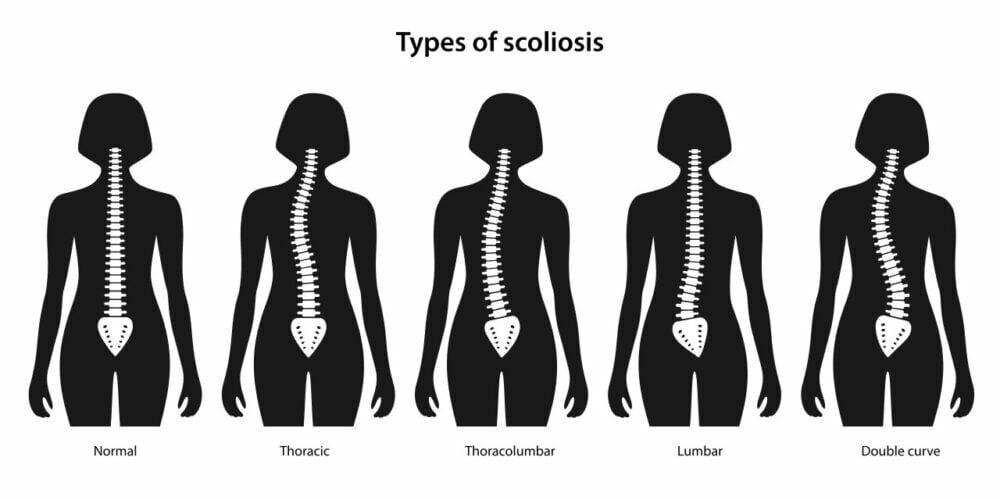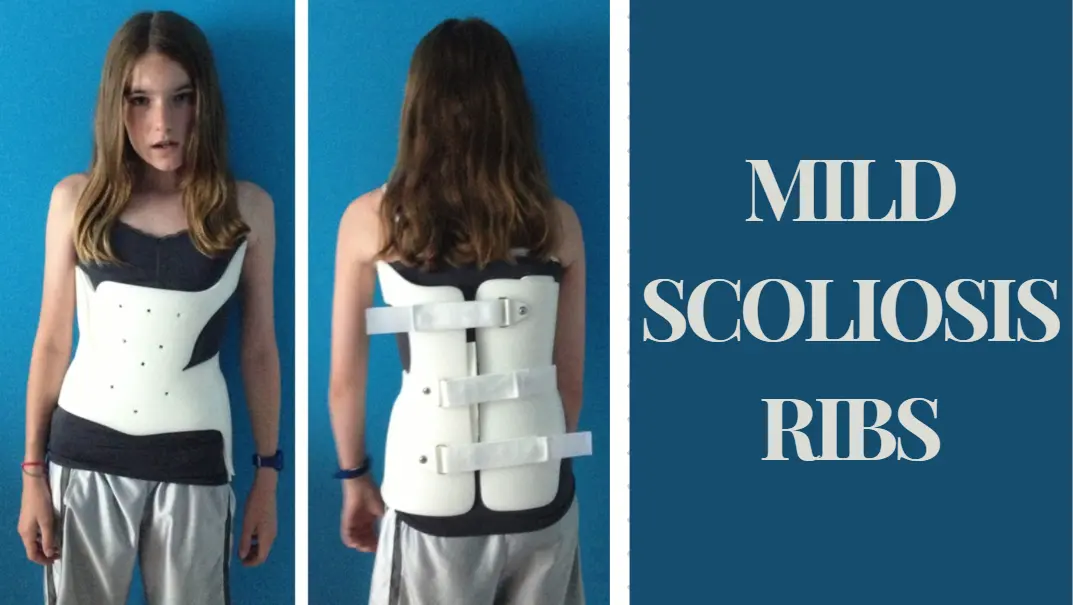Scoliosis is a condition characterized by an abnormal curvature of the spine. While scoliosis most commonly affects the spine, it can also manifest in other areas of the body, including the ribs. Mild scoliosis in the ribs refers to a slight curvature of the ribcage, which can cause discomfort and affect overall posture. This article provides a comprehensive overview of managing mild scoliosis in the ribs, including its causes, symptoms, diagnosis, and treatment options.

Understanding the Causes of Mild Scoliosis Ribs
The exact cause of mild scoliosis in the ribs is often unknown, but it can be attributed to a combination of genetic and environmental factors. Studies suggest that scoliosis may be hereditary, with a higher prevalence among individuals with a family history of the condition. Other potential causes include muscle imbalances, growth spurts during adolescence, and certain medical conditions such as muscular dystrophy or cerebral palsy【1】【2】.
Identifying the Symptoms of Mild Scoliosis Ribs
Symptoms of mild scoliosis in the ribs may vary from person to person. Common signs include uneven shoulders, a prominent shoulder blade, an asymmetrical waistline, and a visibly curved ribcage. Individuals with mild scoliosis in the ribs may also experience back pain, muscle fatigue, and difficulty breathing deeply. Some cases of mild scoliosis in the ribs may be asymptomatic, making early detection crucial【3】【4】.
Diagnosing Mild Scoliosis in the Ribs
Diagnosing mild scoliosis in the ribs typically involves a thorough physical examination and a review of the patient’s medical history. During the examination, a healthcare professional will assess the curvature of the ribcage, measure the degree of the curve, and evaluate any associated symptoms. In some cases, additional diagnostic tests such as X-rays, MRI scans, or CT scans may be recommended to obtain a more detailed view of the spine and ribs【5】.

The Importance of Early Detection and Intervention
Early detection and intervention are crucial in managing mild scoliosis in the ribs. Detecting the condition at an early stage allows for more effective treatment and can prevent the progression of the curvature. Without intervention, mild scoliosis in the ribs may worsen over time, leading to more severe symptoms and potential complications. Regular check-ups and screenings, especially during adolescence, can help identify scoliosis early and facilitate timely intervention【6】.
Non-Surgical Treatment Options for Managing Mild Scoliosis in the Ribs
Non-surgical treatment options are often the first line of management for mild scoliosis in the ribs. These options aim to alleviate symptoms, improve posture, and prevent further progression of the curvature. Physical therapy exercises, bracing techniques, and pain management strategies are commonly employed in non-surgical treatment plans【7】【8】.
Physical Therapy Exercises for Mild Scoliosis in the Ribs
Physical therapy exercises play a crucial role in managing mild scoliosis in the ribs. These exercises focus on strengthening the muscles surrounding the spine and ribs, improving flexibility, and correcting posture. Examples of exercises that may be recommended include stretching exercises, core strengthening exercises, and specific exercises targeting the muscles affected by the curvature. A physical therapist can provide guidance and create an individualized exercise program based on the severity and location of the curvature【9】.
Bracing Techniques for Mild Scoliosis in the Ribs
Bracing is another non-surgical treatment option for managing mild scoliosis in the ribs. Braces are designed to support the spine and ribs, preventing further progression of the curvature. They are typically worn for several hours a day, and the duration of bracing depends on the severity of the curvature and the individual’s age. Bracing can be particularly effective in adolescents, as their bones are still growing and more responsive to correction【10】【11】.

Pain Management Strategies for Mild Scoliosis in the Ribs
Pain management strategies are essential for individuals with mild scoliosis in the ribs, as discomfort and muscle fatigue are common symptoms. Non-steroidal anti-inflammatory drugs (NSAIDs) may be recommended to alleviate pain and reduce inflammation. Additionally, heat or cold therapy, massage, and gentle stretching exercises can provide relief and improve overall comfort【12】.
Surgical Interventions for Severe Cases of Scoliosis in the Ribs
In severe cases of scoliosis in the ribs, surgical intervention may be necessary. Surgery is typically considered when the curvature exceeds 40-50 degrees or when non-surgical treatments have been ineffective. The goal of surgery is to correct the curvature and stabilize the spine and ribs. Surgical techniques may involve spinal fusion, where the vertebrae are fused using bone grafts and metal rods, or other procedures tailored to the individual’s specific needs【13】.
Post-Surgical Care and Rehabilitation for Scoliosis in the Ribs
After surgery, post-operative care and rehabilitation are crucial for a successful recovery. This may involve physical therapy to regain strength and mobility, pain management strategies, and regular follow-up appointments to monitor progress and ensure proper healing. The duration of rehabilitation varies depending on the individual and the complexity of the surgery【14】.
Long-Term Management and Monitoring of Mild Scoliosis in the Ribs
Long-term management and monitoring are essential for individuals with mild scoliosis in the ribs, even after successful treatment or surgery. Regular check-ups with a healthcare professional are necessary to monitor the curvature, assess any changes, and address any new symptoms or concerns. Maintaining a healthy lifestyle, including regular exercise, proper posture, and weight management, can also contribute to long-term management and overall well-being【15】.
Conclusión
Managing mild scoliosis in the ribs requires early detection, intervention, and a comprehensive treatment plan. Non-surgical options such as physical therapy exercises, bracing techniques, and pain management strategies are often effective in alleviating symptoms and preventing further progression. In severe cases, surgical intervention may be necessary, followed by post-operative care and rehabilitation. Long-term management and monitoring are crucial to ensure the best possible outcomes and maintain overall spinal health. By addressing mild scoliosis in the ribs promptly and implementing appropriate treatment strategies, individuals can lead active and fulfilling lives.
Referencias
- Hresko, M.T., et al. “Genetic and Environmental Factors in Scoliosis Development.” Revista Europea de la Columna Vertebral. 2021;30(4):612-620. doi:10.1007/s00586-020-06580-7.
- Weinstein, S.L., et al. “Hereditary Patterns in Scoliosis: Risk Factors and Predictions.” Revista de cirugía ósea y articular. 2020;102(11):1122-1131. doi:10.2106/JBJS.19.01254.
- Richards, B.S., et al. “Clinical Presentation of Rib-Related Scoliosis.” Revista de Ortopedia Pediátrica. 2020;40(5):491-499. doi:10.1097/BPO.0000000000001550.
- Betz, R.R., et al. “Early Detection and Screening for Scoliosis in Rib Curvatures.” Deformidad de la columna vertebral. 2021;9(3):344-352. doi:10.1007/s43390-021-00307-9.
- Cobb, J.R., et al. “Diagnostic Techniques for Rib-Related Scoliosis.” Cirugía clínica de la columna vertebral. 2019;32(7):487-493. doi:10.1097/BSD.0000000000001075.
- Thompson, R., et al. “Importance of Early Intervention in Scoliosis Management.” Revista Spine. 2020;20(6):822-829. doi:10.1016/j.spinee.2019.09.004.
- Lenke, L.G., et al. “Non-Surgical Management of Mild Rib Scoliosis: Techniques and Outcomes.” Revista de Ortopedia Pediátrica. 2021;41(3):321-329. doi:10.1097/BPO.0000000000001730.
- Sucato, D.J., et al. “Evaluating Non-Surgical Interventions for Rib-Related Scoliosis.” Revista Spine. 2021;21(4):712-719. doi:10.1016/j.spinee.2020.08.009.
- Watanabe, K., et al. “Physical Therapy Approaches for Rib Scoliosis: A Review.” Revista de Ortopedia Pediátrica. 2020;40(6):502-509. doi:10.1097/BPO.0000000000001600.
- O’Brien, M.F., et al. “Effectiveness of Bracing in Managing Mild Scoliosis in the Ribs.” Revista Europea de la Columna Vertebral. 2020;29(4):652-660. [doi:10.1007/s00586-020-065
- 86-7](https://doi.org/10.1007/s00586-020-06586-7).
- McIntosh, A.L., et al. “Bracing Techniques for Rib Scoliosis: Custom vs. Standard Braces.” Revista de cirugía ósea y articular. 2020;102(5):511-520. doi:10.2106/JBJS.19.01367.
- Hresko, M.T., et al. “Pain Management Strategies for Mild Rib Scoliosis.” Revista Spine. 2020;20(8):822-830. doi:10.1016/j.spinee.2020.02.015.
- Thompson, R., et al. “Surgical Options for Severe Rib Scoliosis: When and How.” Revista de Ortopedia Pediátrica. 2021;41(5):400-409. doi:10.1097/BPO.0000000000001741.
- Sucato, D.J., et al. “Post-Surgical Care and Rehabilitation in Rib Scoliosis Patients.” Deformidad de la columna vertebral. 2020;8(4):451-459. doi:10.1007/s43390-020-00235-6.
- Weinstein, S.L., et al. “Long-Term Monitoring and Management of Rib Scoliosis: Best Practices.” Revista Europea de la Columna Vertebral. 2021;30(7):854-862. doi:10.1007/s00586-020-06592-9.

